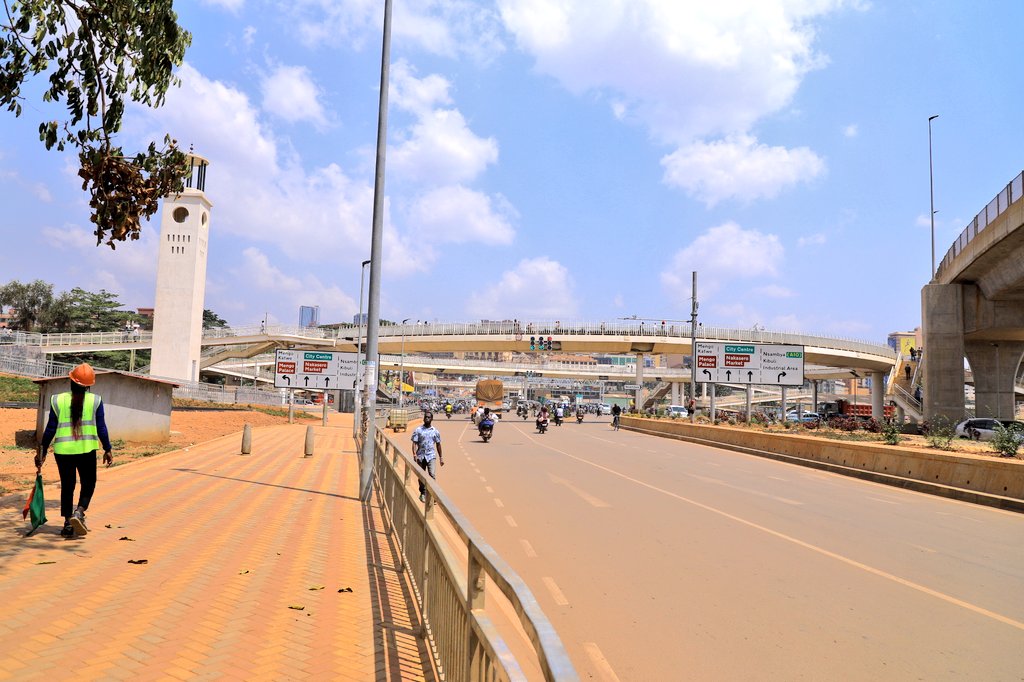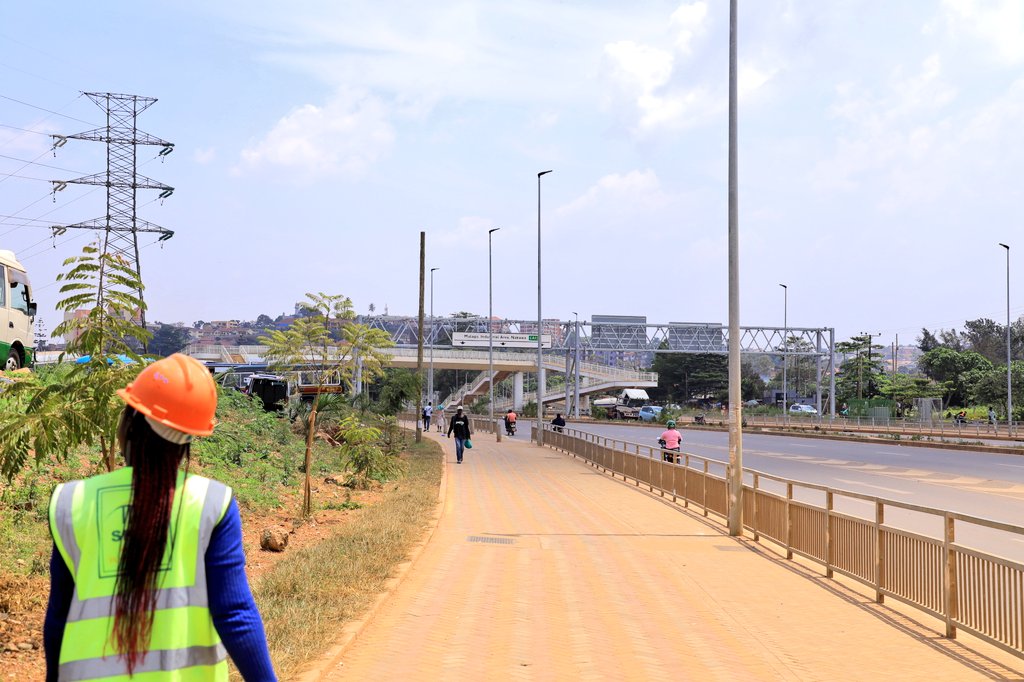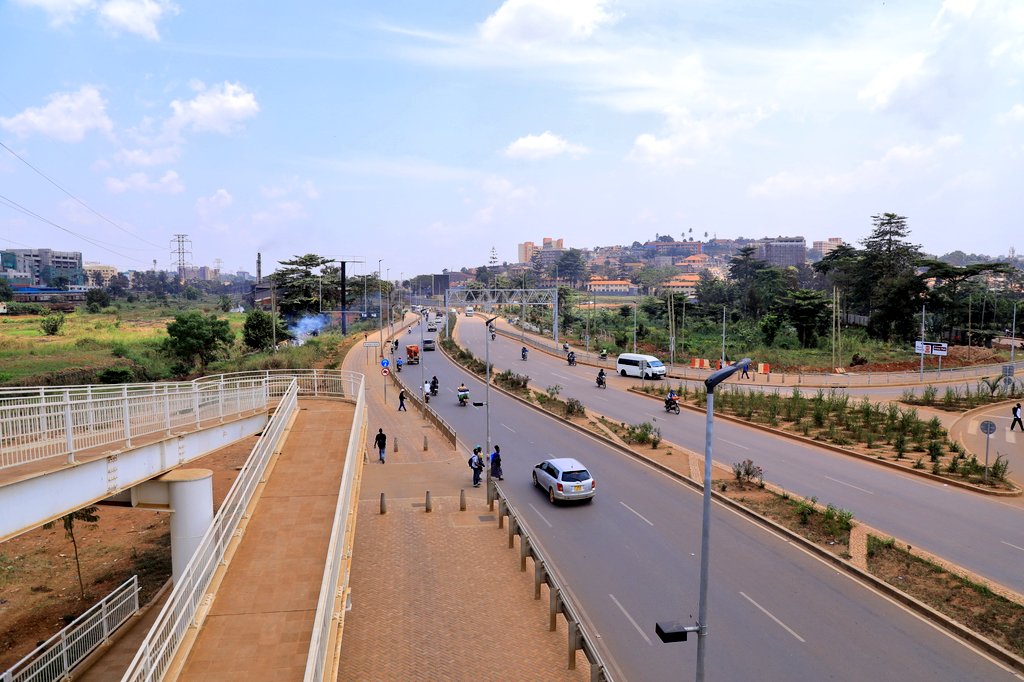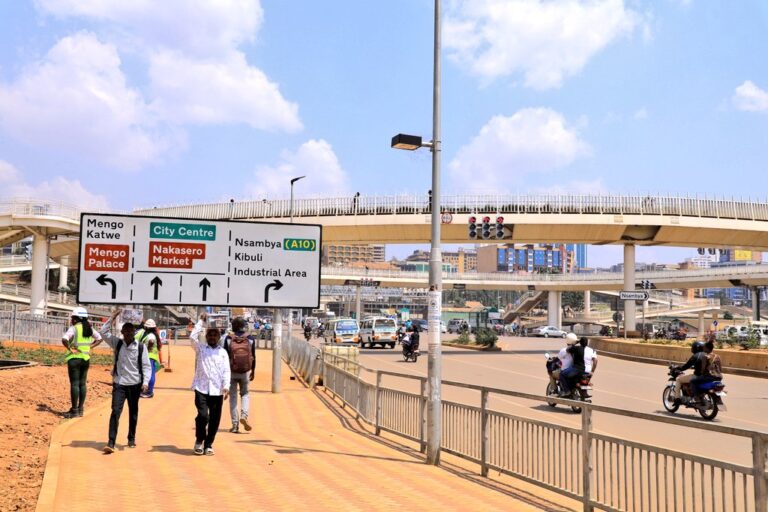For years, Kampala’s streets have been a chaotic dance of cars, motorcycles, and pedestrians, all vying for space.
The city’s rapid urbanization had long outpaced its infrastructure, leaving non-motorized road users at constant risk. But now, the tides are turning.
Amid the honking of matatus and the hurried steps of city dwellers, a new path is emerging—one that promises safety, sustainability, and a healthier way to move.
The Kampala Flyover Project, with its Non-Motorized Transport (NMT) corridor, is reshaping the city’s landscape, prioritizing pedestrians and cyclists like never before.
A Safe Haven for Walkers and Riders
For years, commuting in Kampala often meant squeezing between moving vehicles or navigating uneven, narrow sidewalks.
But with the introduction of spacious, dedicated walkways, pedestrians now have a secure path to move freely without the fear of oncoming traffic.

Cyclists, who once risked their lives sharing lanes with speeding boda bodas, now have a smooth, well-defined route.
A Breath of Fresh Air—Literally
The congestion that once choked the city is gradually easing.
With fewer cars clogging the roads, emissions are dropping, making way for cleaner air.
The green strips lining the walkways do more than beautify the city—they act as urban lungs, absorbing pollution and offering pedestrians a refreshing environment.
Lighting the Way to Safety
As the sun sets over Kampala, the city’s newest transformation comes alive.
Bright yellow street lights, strategically placed along the NMT corridors, illuminate the walkways, ensuring safety for nighttime commuters.

For the first time, many residents feel comfortable walking home after dark, knowing their paths are well-lit and designed with their security in mind.
A Healthier, More Vibrant Kampala
With this project, Kampala is not just building infrastructure—it’s encouraging a lifestyle shift.
The ease of walking and cycling means more people are embracing active travel, reducing dependency on motorized transport.

This shift not only cuts down personal transport costs but also fosters a healthier, more connected community.
As the city embraces this game-changing initiative, one thing is clear: the future of Kampala is greener, safer, and more pedestrian-friendly than ever before.

